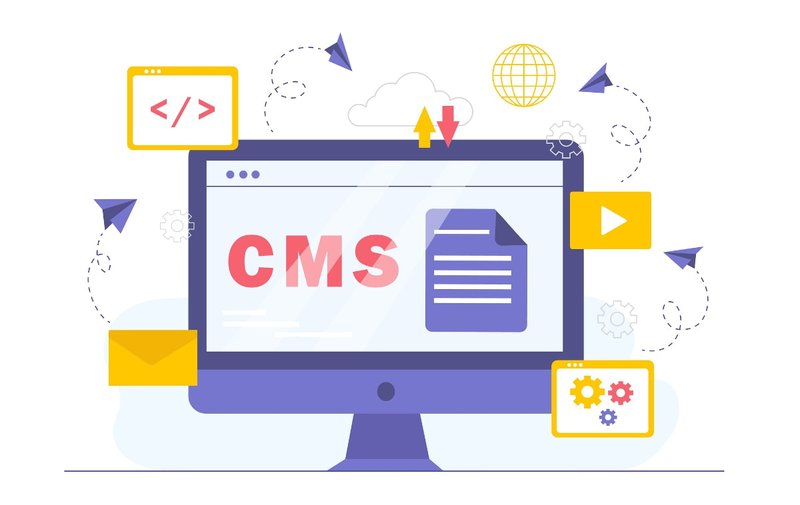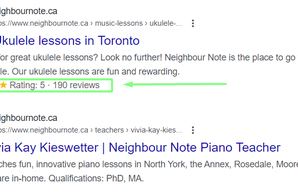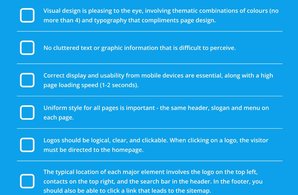What Is X-Default in Hreflang? Best Practices for Global SEO
- Home
- Knowledge Sharing
- What Is X-Default in Hreflang? Best Practices for Global SEO
In today’s digital landscape, businesses are no longer limited by borders. Canadian companies in Ontario, Quebec, and across the provinces increasingly serve audiences who speak multiple languages — most often English and French. But without the right technical SEO setup, those users may land on the wrong version of your website, leading to confusion, frustration, and lost conversions.
This is where hreflang tags — and the often-overlooked X-Default attribute — come in. In this article, we’ll explain what X-Default is, why it matters, and how your business can implement it to improve user experience, reduce bounce rates, and maximize SEO ROI.
At SeoLogist , we’ve helped organizations across Ontario and beyond optimize their multilingual websites. Let’s explore how you can use hreflang and X-Default to make your site truly global — while staying rooted in Canada’s bilingual reality.
Key Takeaways for Canadian Businesses
- Canada’s bilingual nature makes hreflang and X-Default essential.
- Ontario and Quebec businesses especially benefit from correct setup.
- X-Default ensures no user is left behind when no direct language match exists.
- Correct implementation = better UX, higher ROI, and long-term SEO growth.
For Canadian organizations : Whether you’re an e-commerce retailer in Toronto or a tourism operator serving Quebec, hreflang and X-Default can make or break your digital presence.
What Is Hreflang and Why Does It Matter?
The hreflang attribute is an HTML tag that tells search engines what language and regional version of a page should be shown to users. It ensures that someone searching in French in Montreal doesn’t land on the English-only Ontario version of your site.
How it works :
<link rel="alternate" hreflang="en-ca" href="https://example.com/en/" />
<link rel="alternate" hreflang="fr-ca" href="https://example.com/fr/" />
- en-ca tells Google: “This page is in English for Canadian users.”
- fr-ca tells Google: “This page is in French for Canadian users.”
Without hreflang, search engines may guess which version to serve — often incorrectly.
Why it matters in Canada :
- Canada is officially bilingual. Many businesses in Ontario, Ottawa, or Toronto serve both English and French speakers.
- Quebec users expect French content, while Ontario audiences default to English.
- Multicultural audiences (Mandarin, Punjabi, Arabic, etc.) further complicate targeting.
Correct hreflang ensures your users always see the right page, improving engagement, trust, and conversions.
What Is the X-Default Attribute?
While hreflang tags match specific language–region pairs, the X-Default attribute provides a fallback option.
Definition
:
x-default tells search engines which page to show when a user’s language or region doesn’t match any of your defined hreflang attributes.
Example in code :
<link rel="alternate" hreflang="en-ca" href="https://example.com/en/" />
<link rel="alternate" hreflang="fr-ca" href="https://example.com/fr/" />
<link rel="alternate" hreflang="x-default" href="https://example.com/" />
Real-world Canadian example
:
Imagine a Quebec visitor lands on your Ontario-based English site. If you don’t provide an X-Default, Google may show them the wrong version. But if you set X-Default to a language-selection page or a global homepage, users can choose their preferred language.
This avoids confusion and ensures no visitor feels excluded — a critical factor in bilingual or multicultural markets.

When Should You Use X-Default?
Not every site needs an X-Default, but for international and bilingual websites it’s essential.
Use cases :
- Multilingual websites : English/French in Canada, English/Spanish in the U.S., etc.
- Geotargeted content : Retailers with region-specific shipping policies.
- Language selector pages : Directing users to choose their preferred version.
Canadian context :
- Federal and provincial websites : Must comply with bilingual requirements.
- E-commerce businesses : Online stores serving both Quebec and Ontario audiences.
- Tourism operators : Visitors from around the world may need a neutral default page.
Benefits :
- Smooth user experience when no language match exists.
- Lower bounce rates by avoiding “wrong page” scenarios.
- Reinforces trust and accessibility in bilingual markets.
How to Implement X-Default Hreflang Tags
There are three main methods to implement hreflang and X-Default: HTML code, XML sitemaps, and CMS plugins.
In HTML Code
Place hreflang annotations in the <head> of each page.
<link rel="alternate" hreflang="en-ca" href="https://example.com/en/" />
<link rel="alternate" hreflang="fr-ca" href="https://example.com/fr/" />
<link rel="alternate" hreflang="x-default" href="https://example.com/" />
✔ Best for small websites.
✘ Hard to maintain at scale.
In XML Sitemaps
For larger sites, add hreflang attributes directly in your sitemap:
<url>
<loc>https://example.com/en/</loc>
<xhtml:link rel="alternate" hreflang="en-ca" href="https://example.com/en/"/>
<xhtml:link rel="alternate" hreflang="fr-ca" href="https://example.com/fr/"/>
<xhtml:link rel="alternate" hreflang="x-default" href="https://example.com/"/>
</url>
✔ Easier to manage across thousands of URLs.
✘ Requires technical SEO expertise.

With WordPress/Shopify Plugins
Many Canadian businesses use CMS platforms. Plugins like Yoast SEO (WordPress) or Langify (Shopify) automate hreflang setup.
✔ Saves time, no manual coding.
✘ Risk of plugin conflicts — always test.
| Method | Best For | Pros | Cons |
|---|---|---|---|
| HTML Code | Small sites | Simple to add manually | Hard to scale |
| XML Sitemap | Large sites | Centralized management | Technical setup required |
| CMS Plugins | SMBs/e-commerce | Fast and automated | Plugin reliability varies |
X-Default Best Practices
Follow these guidelines to keep your hreflang implementation clean and effective.
Best Practices Checklist :
- Use only one X-Default per page.
- Point X-Default to a neutral page (global homepage or language selector).
- Keep hreflang and canonical tags consistent .
- Regularly test with Google Search Console’s International Targeting report .
- Align with your main audience analytics (e.g., English vs French traffic split).
| Do’s | Don’ts |
|---|---|
| Add X-Default to every hreflang set | Use multiple X-Defaults per page |
| Test with Google Search Console | Point X-Default to random pages |
| Maintain parity across desktop/mobile | Forget alternate tags for mobile sites |
| Update sitemaps regularly | Ignore Quebec users on English sites |
Common Mistakes to Avoid
Even well-meaning businesses often make errors:
- Wrong language codes (e.g., using fr instead of fr-ca).
- Inconsistent implementation across different page sets.
- No X-Default — leaving international users stranded.
- Forgetting mobile/desktop alternates , which can confuse Google.
These mistakes not only harm SEO but also damage user trust.

How X-Default Affects SEO and User Experience
While X-Default does not directly improve rankings, it has strong indirect SEO benefits:
- Lower bounce rates : Visitors don’t leave immediately after landing on the wrong page.
- Higher engagement : Users find the right content faster.
- Better conversions : A seamless language experience builds trust.
- Stronger brand image : Canadian businesses show inclusivity by respecting bilingual audiences.
Google explicitly recommends hreflang and X-Default for international SEO — not using them risks losing visibility and traffic.
Work With Seologist for International & Local SEO
Implementing hreflang and X-Default can feel technical, but the payoff is clear: fewer lost visitors, higher engagement, and stronger SEO performance.
At SeoLogist, we specialize in helping Ontario and Canadian businesses navigate these complexities. From bilingual site audits to full international SEO campaigns, we ensure your website speaks the right language to the right audience — every time.
Your Global SEO Starts Here
Experience the Seologist difference. Whether you serve English, French, or international audiences, our experts ensure your hreflang and X-Default setup delivers the right page to every visitor — boosting engagement, conversions, and SEO performance.
FAQs: X-Default & Hreflang
What’s the difference between hreflang and X-Default?
Hreflang maps specific language/region versions (e.g., en-ca, fr-ca). X-Default is the fallback URL when no language/region match exists — ideally a language selector or a neutral global page.
Do I need an X-Default tag if my site is only in English?
If you serve only one language and one region, X-Default is optional. If you attract international traffic or plan to add French (common in Canada), set X-Default now to future-proof your implementation.
How do I test whether my hreflang tags work correctly?
Use Google Search Console (Pages → Inspect URL), check rendered HTML, validate with reputable hreflang testing tools, and confirm reciprocal annotations across all alternates (including X-Default). Monitor landing pages and geo/language splits in analytics.
Can X-Default improve rankings?
Not directly. It improves user experience by routing visitors to the right experience, which lowers bounce and boosts engagement/conversions — indirect signals that support SEO performance.
What happens if I don’t use X-Default?
Users with unmatched languages or regions may land on the wrong page (e.g., Quebec users seeing an English-only Ontario page), causing confusion, higher bounce rates, and missed conversions.
What should X-Default point to in Canada?
Ideally to a neutral language selector or a global homepage that clearly offers English (Canada) and Français (Canada). Avoid sending everyone to a single language by default.
Should canonical and hreflang point to the same language version?
Yes. Keep canonicals self-referential for each page version and ensure every alternate returns a matching set of hreflang annotations (including X-Default) to avoid mixed signals.
What are the most common hreflang mistakes in bilingual Canadian sites?
Using fr instead of fr-ca, missing reciprocal tags, no X-Default, inconsistent sitemaps vs. HTML tags, and forgetting app/AMP/mobile alternates.





